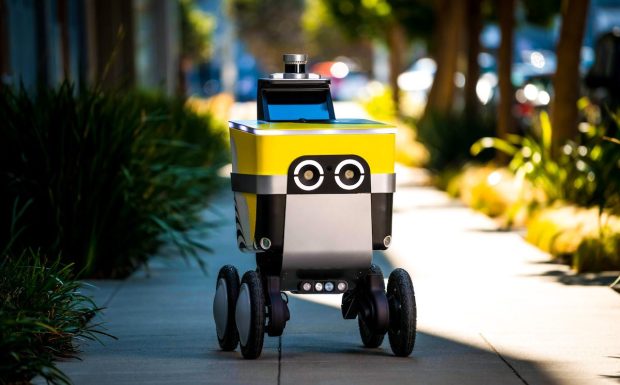Food Delivery Robots Expand Amid Backlash, Theft

As delivery robots expand their reach in cities and on college campuses, some are making their negative sentiments about the technology known, reportedly going so far as to vandalize or steal from these machines.
Automated delivery is becoming increasingly common. Earlier this month, Uber-backed firm Serve Robotics announced its completion of a go-public transaction and its raise of $30 million in financing.
More and more colleges have been introducing food delivery bots to their campuses. Most recently, the University of Southern Indiana launched Monday (Aug. 21) a robotic delivery partnership with Kiwibot via Grubhub.
“We are thrilled to continually collaborate with Grubhub and Kiwibot in expanding our range of delivery options for the University community,” Rebecca Diamond, director of dining services at the university, said in a statement. “The introduction of Kiwibot robots will revolutionize convenience for our busy students and employees.”
Additionally, a recent report from San Angelo, Texas local news publication San Angelo Live said that Starship Technologies’ food delivery bots have come to Angelo State University. And according to KSN, Starship has also rolled out these robots at Kansas’ Wichita State University.
Yet many are unhappy with the spread of this technology, with some going so far as to resort to criminal action. A viral TikTok video shows people attacking, stealing from, and vandalizing these machines.
Businesses in Los Angeles, where these robots roam the street, have been feeling the impact, according to a recent report from area news outlet KTLA. Last year, two University of Tennessee students were reportedly arrested for slamming a delivery robot into the ground.
While the motivations behind these actions are not clear, many consumers have their concerns about food delivery robots. According to data from PYMNTS’ exclusive report, “Connected Dining: The Robot Will Take Your Order Now,” for which we surveyed a census-balanced panel of nearly 2,000 U.S. consumers in June, 71% of respondents reported being uninterested in robotics or automated systems delivering food.
Of these consumers who have no interest in the technology, 73% cited concerns about job loss and the lack of personal interaction, 65% reported having worries about reliability and order accuracy, and one in three were disturbed by potential consequences for privacy, security and safety.
Still, demand for food delivery remains. The unit economics of human delivery can be tough to make work, and with some areas proposing higher wages for these workers, consumers — who are already chafing at the added fees of the channel — may increasingly make the shift to pickup or skip restaurant ordering altogether, opting for alternatives such as ready-to-eat meals, if other solutions do not present themselves.
PYMNTS’ study “Connected Dining: Rising Costs Push Consumers Toward Pickup,” which drew from a census-balanced survey of more than 2,000 U.S. consumers, reveals that pickup orders outnumber delivery nearly 4 to 1.
Delivery robots may present a solution, meeting consumers’ desire for on-demand convenience while avoiding the high cost of driver labor.
Ali Kashani, co-founder and CEO of Serve, predicted in an interview last year with PYMNTS that it will take time to overcome resistance to the new technology.
“There’s [a] ton of demand already,” Kashani said. “…It’s just a matter of time. It’s just patience. You have to go through this process, put the robots out, take care of the integrations, go through the manufacturing of more robots. It takes time to engage regulators, engage customers. … There’s an education component, making sure people understand why this exists, why it needs to exist.”

